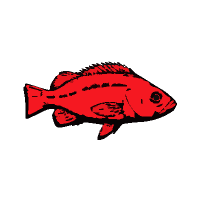Citing StreamNet Content
Overview
Referencing information in a publication serves several purposes. First and foremost, it identifies the entity that authored the work or collected and analyzed the data and recognizes the work that went into producing the report or dataset. It also provides a path for dataset replication, for either a direct comparison or trend analysis with additional data. Enough information must be provided to allow a person to find the source and make the same data selections.
The following are guidelines based on the American Fisheries’ Society Style guide https://fisheries.org/books-journals/writing-tools/style-guide/ as well as U.S.G.S https://www.usgs.gov/data-management/data-citation. Please check with the publisher or other entity to whom you are submitting your work to determine their preferred citation style.
For additional assistance, please contact the Columbia Basin Fish and Wildlife Library fishlib@critfc.or
Cite standalone computer files not included in a larger work such as a report using descriptive information about the file provided on the StreamNet website.
General format:
Author(s). Year. Title [format]. Publisher (if applicable), Place of publication (if applicable). Available: URL
Examples:
AHA Naselle Chinook (2020) from the All StreamNet Documents webpage:
Hatchery Scientific Review Group. 2020. AHA Naselle Chinook [Microsoft Excel file]. Available: https://www.streamnet.org/1-aha-2020_naselle_chinook/
MasterSmoltTrap Access database contained in Cedar Creek Smolt Trap data files from the StreamNet Data Store:
Groesbeck, M. 2007. Cedar Creek Smolt Trap [Microsoft Access file]. Washington Department of Fish and Wildlife, Vancouver, Washington. Available: https://app.streamnet.org/datastore_search_classic.cfm?id=443
Cite data obtained from a database query using descriptive information provided with the data. If additional information is necessary to enable readers to locate the exact source, it may be described in the text where the query is cited.
General format:
Dataset descriptor (Population/Stock identifier and type of indicator). Start and end years of dataset. Estimate type of data from method descriptor. Reporting agency and any other contributing entities. Protocol and Methods availability. Accessed from database name (Coordinated Assessments data exchange) version/date of download from URL link by Name of person who retrieved the data and their affiliation.
Examples:
Catherine Creek spring Chinook abundance estimate obtained by querying the CAX database:
Catherine Creek – spring Chinook salmon Snake River Spring/Summer Chinook ESU Natural Origin Spawner Abundance. (1997-2021). Escapement data from PIT tag Based Escapement Estimation Above Lower Granite Dam v1.0. Nez Perce Tribe | Idaho Department of Fish and Game | Quantitative Consultants, Inc.. Protocol and Methods available at https://www.monitoringresources.org/Document/Protocol/Details/2187. Accessed from Coordinated Assessments data exchange at www.cax.streamnet.org vers 2022/02/22 10:00 by Mari Williams, PSMFC.
Catherine Creek spring Chinook salmon spawner counts obtained by querying the Fish Monitoring Data database:
Oregon Department of Fish and Wildlife. 2022. Catherine Creek spring Chinook salmon spawner counts. Available: https://www.streamnet.org/data/trends/trend/?trendid=500745
Citations for journal articles obtained from the StreamNet website are formatted the same as for articles obtained from the publisher in digital or print format.
General format:
Author(s). Year. Article title. Journal title volume(issue): page range (if applicable).
Example:
Injuries from non-retention in gillnet fisheries suppress reproductive maturation in escaped fish from the HSRG Reports and Documents webpage:
Baker, M. R., P. Swanson, P., and G. Young. 2013. Injuries from non-retention in gillnet fisheries suppress reproductive maturation in escaped fish. PLos ONE 8(7).
Citations for reports, white papers, and other narrative documents obtained from the StreamNet website are formatted the same as for printed items.
General format:
Author(s). Year. Title. Publisher or reporting agency, Report or contract/project number (if applicable), Place of publication (if applicable).
Examples:
Developing recovery objectives and phase triggers for salmonid populations from the HSRG Reports and Documents webpage:
Hatchery Scientific Review Group. 2020. Developing recovery objectives and phase triggers for salmonid populations. Hatchery Scientific Review Group.
StreamNet Project fiscal year 2006 annual report from All StreamNet Documents webpage:
Schmidt, B. 2007. StreamNet Project fiscal year 2006. Annual report to the Bonneville Power Administration, Project 1988-108-04, Portland, Oregon.
Cite the webpage from which the text is obtained and indicate the copyright or ‘last updated’ date indicated on the webpage. If additional information is necessary to enable readers to locate the exact source, it may be described in the text where the webpage is cited.
General format:
Author. Copyright or last updated year of webpage. Title of webpage. Available: URL
Example:
Historical information about StreamNet obtained from the About StreamNet webpage
StreamNet. 2021. About StreamNet. Available: https://www.streamnet.org/about/background/
These guidelines are based on the American Fisheries’ Society Style guide https://fisheries.org/books-journals/writing-tools/style-guide/.


